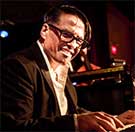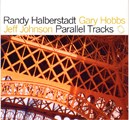 The Two Kinds of Jazz Standards
by Ron Davis
RonDavisMusic.com
There are two kinds of “jazz standards”. The first is the tune every player knows or is expected to know. You can show up, say, to a Ronnie Scott’s jam session, sit down with a half-dozen musicians you’ve never met in your life, call “Pennies From Heaven,” no lead sheet before you, and voila - great music out of thin air. More...
|
|
A Note to Jazz Artists
The Artist Articles section at JazzStandards.com allows you to contribute your thoughts on the jazz standards. Typically this will be comments on the jazz standards you have included in an album, why you chose them, and what you like about them.
But, if you have thoughts about jazz standards in general, submit them for our consideration.
We are restricting submissions to published artists.
To contact us go to the Permission & contact information link at the bottom of this page.
|
|
 The Evolution of Jazz Standards
by Jason Wolbach
What is a jazz standard? Who decides what songs are best to play? Jason Wolbach’s The Evolution of Jazz Standards: Realizing the Interpretation of Repertoire in Jazz Music sheds light on the history of the jazz standard repertoire, as well as possibilities for future adoptions into the collection (Kindle edition). More...
|
 I Walked with Giants
by Jimmy Heath and Joseph McLaren
Pianist Monty Alexander put it most succinctly. “There’s no one like him. He’s nonpareil.” Jimmy Heath is a giant among giants. Musicians of all generations revere the saxophonist, praising his playing, his unique sound, his composing, arranging and orchestrating skills, his magic as a teacher, his humor, humility and humanity. More...
|
 Jazz Singers: The Ultimate Guide
by Scott Yanow
Jazz critic and author Scott Yanow tenth book features 521 singers profiled through the year 2007, sketches of 198 more singers, and much more. We were impressed so have decided to feature a review of it. More...
|
|
But wait! There’s more...
In our library are two more books with similar titles: Singing Jazz and Jazz Singing. One is a decade old and the other precedes Scott Yanow’s guide by nearly two decades. All three have their merits and all three are reviewed by our editor, Sandra Burlingame. More...
|
|
|
|
 Jazz pianist and professor Randy Halberstadt tells us why he chooses tunes to play, record, and write about (click here for the interview). His highly recommended Parallel Tracks CD (left), with Jeff Johnson on bass and Gary Hobbs on drums includes the jazz standards, “In the Wee Small Hours of the Morning,” “Invitation,” “The Touch of Your Lips,” “Well You Needn’t,” and “Everything I Love.” You may visit his website at randyhalberstadt.com. Jazz pianist and professor Randy Halberstadt tells us why he chooses tunes to play, record, and write about (click here for the interview). His highly recommended Parallel Tracks CD (left), with Jeff Johnson on bass and Gary Hobbs on drums includes the jazz standards, “In the Wee Small Hours of the Morning,” “Invitation,” “The Touch of Your Lips,” “Well You Needn’t,” and “Everything I Love.” You may visit his website at randyhalberstadt.com. Randy provides comments on “Just You, Just Me,” and “Mean to Me.”
|
 Terry Perkins interviews lyricist, vocalist, and composer Jon Hendricks, who has inspired generations of lyricists and singers (click here for the interview). Terry Perkins interviews lyricist, vocalist, and composer Jon Hendricks, who has inspired generations of lyricists and singers (click here for the interview).
Hendricks is noted for expanding the art of vocalese to include multiple voices singing various instrumental parts. The term “vocalese” was first used by noted jazz critic Leonard Feather in a 1959 article in Jazz: A Quarterly of American Music to describe the art of melding new lyrics to the frame of classic jazz instrumentals.
|
 The National Public Radio show Piano Jazz, was hosted by famed pianist Marian McPartland. The premise of Piano Jazz was deceptively simple. McPartland welcomed a guest for each hour-long episode, they talked about music, and McPartland and the guest played music in interludes between the on-going conversations. Read Terry Perkins’ interview with McPartland.
|
 Terry Perkins interviews Nancy Wilson about her National Public Radio show, Jazz Profiles. This weekly, one-hour program uses a documentary style approach to examine the lives and musical contributions of jazz legends ranging from Louis Armstrong, and Duke Ellington to Miles Davis, and Sonny Rollins (click here for the interview).
|
|
|


